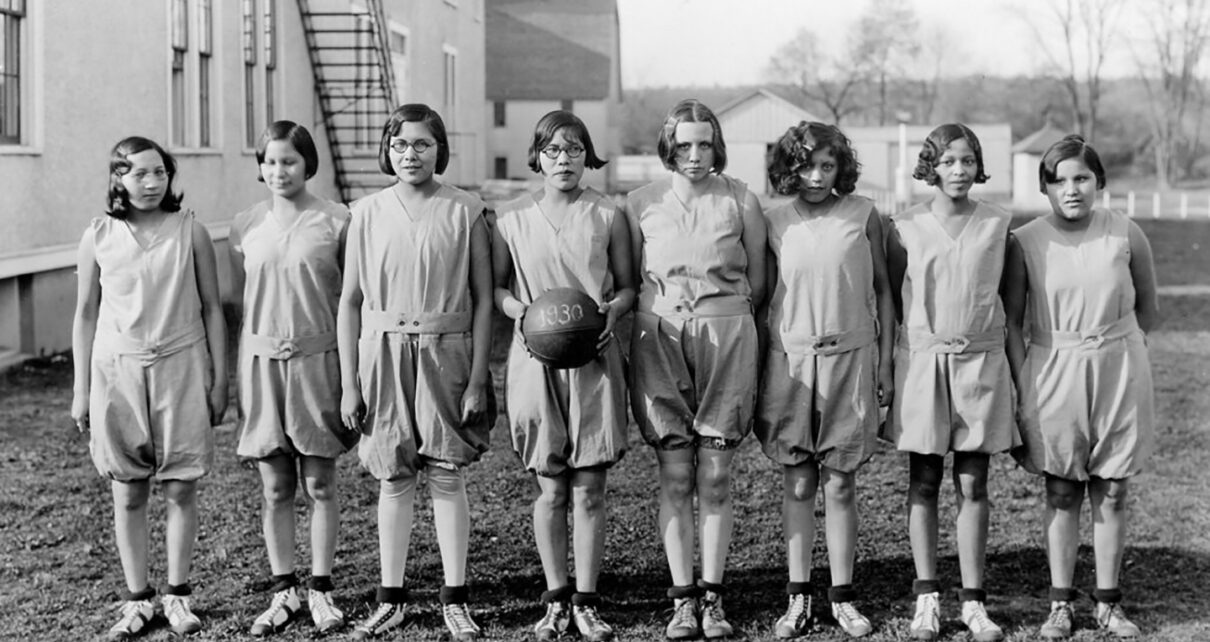By Rebecca Bowen, Director, Seneca Nation Archives
For the last year we have been confronted daily by the enormous challenge of the COVID-19 pandemic that has gripped our Seneca Nation, the United States, and the world. But this is not our first confrontation with disease nor, unfortunately, will it be the last. Since 1492 the history of indigenous peoples, and in time our own Seneca history, has been a record of the devastation inflicted upon us by disease.
Smallpox reached North America by 1520. For the Hodinöhsöni’ the first smallpox epidemic hit in the mid-1600s. Smallpox would become a leading cause of death by disease among indigenous peoples until the twentieth century, but there were other equally deadly diseases to which our people had no defenses: measles, bubonic plague, cholera, typhoid, pleurisy, scarlet fever, diphtheria, mumps, and whooping cough.
In the late 1840s the proliferation of typhoid, measles, and dysentery throughout the Cattaraugus Territory resulted in the deaths of upwards of 120 Senecas. In 1847 Laura Wright, the wife of missionary Asher Wright, had taken Seneca children orphaned by typhoid fever into her home. In 1854 the death of a Seneca man left nine sick and malnourished children in dire need and it was at this point an orphanage was established that ultimately became the Thomas Asylum for Destitute and Orphan Indian Children, later renamed the Thomas Indian School (TIS). Through the next 100 years infectious diseases such as smallpox, measles, dysentery, influenza and pneumonia would plague the orphan asylum and the surrounding Seneca communities.
By 1888 consumption, a.k.a. tuberculosis, was a leading cause of death among Senecas. Indeed, a study appearing in the New York Medical Journal the previous year maintained that tuberculosis accounted for 625 per 1000 American Indian deaths in New York State. An Extra Census Bulletin published by the U.S. Census Bureau in 1890 listed tuberculosis as the leading cause of death at Allegany and Cattaraugus. By 1909 tuberculosis was a leading health problem among American Indians nation-wide and accounted for 40% of all Indian deaths in the U.S. Today the incidence rate of TB among Native people has sharply decreased, however, it remains well above the rate found in the white population.
Dr. Albert D. Lake attended to the students at the Thomas Indian School from 1876 until 1922. It can probably be said that his forty-three years at TIS made him the most informed medical professional with regard to the health condition of the students and of the residents at Cattaraugus. At TIS he saw influenza, tuberculosis, scrofula, polio, trachoma, measles, impetigo, whooping cough, and scarlet fever. In his 1888 annual physician’s report he noted a 10% mortality rate among Senecas due to TB. But before the end of that year a deadly disease would resurface at TIS, Cattaraugus, and Allegany.
In the fall of that year Andrew John Jr. was in his third consecutive term as the Nation’s president. Leases were the consuming issue of the day and our opponents saw allotment, citizenship, and assimilation as the quickest way to dissolving our Nationhood and opening up our lands. In late September Job King, himself a former Nation president, announced the popular annual Iroquois Agricultural Fair was postponed because of the “untruthful and diabolical rumor of there being smallpox among the Indians.” However, within a week the territories were quarantined and roads leading from the Cattaraugus Territory to Gowanda were closed and railroad companies were not “to bring Indians from the reservation to Olean.” Buffalo’s Commercial Advertiser reported that “a serious condition of affairs is reported to exist on the Indian Cattaraugus reservation . . . on account of the prevalence of smallpox among the Indians . . . the sufferers are strictly quarantined, and are reported to be without food and without medical attendance. It is stated there are no doctors to vaccinate the Indian families and thus prevent a spread of the disease . . .” By early November the crisis had passed and quarantines were lifted, but not before eight Senecas perished to smallpox.
While there have been epidemics through the years, the last pandemic to strike Turtle Island occurred in 1918-1919. It was difficult to locate data and information to convey the experience of our Seneca people during that time. The H1V1 flu pandemic commenced during the waning days of WWI. Like the rest of the world, the Hodinöhsöni’ were not immune. It is estimated that from the fall of 1918 to early spring of 1919 approximately eight hundred Hodinöhsöni’ were infected and 80 did not survive the virus that quickly developed into pneumonia, the fatal complication of the virus. At the Thomas Indian School in a span of days in late October 1918, the entire student body, with the exception of one student, became sick. On October 31st three students, Elin Bennett from Cattaraugus, Hamilton Jimerson from Allegany, and Archie Logan, Onondaga, died. Ultimately six students and 4 staff members would succumb to the deadly flu.
Fall 1918 and spring 1919 the second and third waves of the pandemic hit and impacted our region harder than the first wave. Then, like today’s pandemic experience, state and local governments closed schools and theaters, and banned all public gatherings. Parents were especially warned to keep their children out of crowds. In October 1918 Salamanca’s Republican Press reported that “the students and helpers at the Friends’ Indian school [a.k.a. Quaker School, Tunesassa] are all improving.”
Asher Wright, the missionary at Buffalo Creek and later at Cattaraugus, also served as physician to the children at the asylum and the Cattaraugus residents. He was known to spend his own money for medicines and he often appealed to New York State and the federal government for medical assistance generally to little or no avail. In 1875, the year of Wright’s death, the federal government did hire physicians to vaccinate Hodinöhsöni’ across the state. Approximately 38% were inoculated in the effort. Granted there was opposition to vaccinations within Seneca communities, but when the smallpox epidemic hit in late 1888 the TIS physician Dr. Lake was able to vaccinate 500 Senecas to curb the spread of smallpox throughout the Seneca territories.
Today we look forward to a time when we will be released from the grip of COVID-19. We have seen and felt the loss it has inflicted upon Seneca families and our communities. We have also witnessed and are thankful for recovery. To a lesser degree these are surely the same experiences and emotions felt by our people over the last centuries when unknown diseases befell them. I say lesser because today we have a government and a health system that, while some will find fault, have stepped up to the frontline to face something none of us in any of our lifetimes has every faced before. It’s new to us, yet not new from the perspective of our Seneca history.




